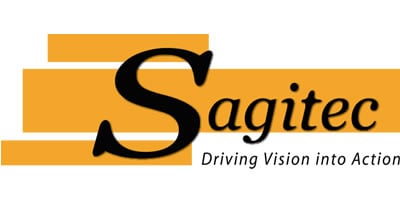3 Ways Educators Can Guide Pension System Projects to Success
By Sagitec Solutions on Mon, Oct 24, 2011

Like all stakeholders in today’s turbulent pension industry, educators are doing their best to navigate a perfect storm of challenges. With incoming waves of new retirees, sweeping legislative reforms, and large-scale IT replacement projects for a modern pension administration software solution with a web portal looming over pension funds, the need for effective education has never been greater. This is both good and bad news for the educator. On one hand, it means their skills have never been more necessary. On the other, it means the pressure to deliver is on.
The educator’s responsibility is to guide and inform members, employers, and internal users alike. But to lead, one must have direction. To clarify, the educator must be cognizant of his or her importance to the overall success of a pension system project and be prepared to assume the role of a leader. The educator must identify where and how he or she can add value—and then do so. There are countless ways this can happen, but we offer the following suggestions as a start.
Help Set and Manage Expectations
In our experience, educators have played little part in the RFP requirements and gathering process. This should change. These individuals are the best equipped to understand what our organizations need out of training, online help documentation, and (potentially) usability and GUIs. Their early involvement will ensure clear expectations and establish more detailed roadmaps so we’re not asking questions late in the project lifecycle that could’ve been answered months—even years—beforehand. Upper management could, and should, take the lead here and make an effort to get these experts involved.
Another possibility is to incorporate the insight of educators in the development of an enhanced Project Communications Plan. Although most (if not every) project has one, Project Comm Plans are frequently generic. In other words, they do not reflect the specific and unique needs of the fund in question. IT vendors can only surmise so much about a fund’s staff and members. By incorporating insight from educators, this artifact could establish far more valuable and appropriate strategies for communicating change and other pertinent information throughout the project.
Offer Insight into System Design
Usability experts and instructional designers have a wealth of knowledge regarding communications and education. In all likelihood, no one in our respective organizations knows more about how people search for, access, and process information than they do. These educators could help us inform the design of our systems, including the language and layout of correspondence templates, the wording of system messages, the arrangement of menu items on a GUI, and/or the structure of a member self-service portal.
The input of educators is also sorely needed in the production of help documentation, online, print, or otherwise. Typically, we see few if any RFP specifications around help documentation beyond simply requiring that it exist. Educators can help establish what an organization wants and needs out of a help system and then ensure that the end product meets with those expectations. For example, educators could offer recommendations about the usability and organization of the help system and arrange for usability testing to determine whether or not the online help systems was actually helpful or not.
Employ Tools to Communicate Change and Ease Org Transition
Organization transition and readiness is probably the single most important role of the educator during a pension system replacement project. Educators should employ every tool at their disposal to communicate change and ease the transition of those affected. For example, a Learning Management System could help educators centralize and automate learning administration, assemble and deliver content more rapidly, and consolidate training and education services on a single web-based platform. And social media has created another potential vehicle by which educators can engage in one- or two-way communication with members and staff.
Using the tools of their trade, educators can also help reduce risk to the project. Helping to organize Project and Phase Kick-Off events, for example, promotes an environment of openness and transparency. Educators are in a better position to help project management understand the concerns of stakeholders and design effective means for reducing their anxiety and the risks that are associated with it.
Conclusion
Given the importance of communication and education in the current climate of the public pension industry, educators must reevaluate their roles. They must identify ways to maximize their effectiveness and optimize their value to those who seek information and guidance. Education lasts a lifetime—and a lifecycle. Management should get educators involved early on and keep them engaged throughout every phase of the project.
Do you have experience as an Educator guiding IT projects to success? What tips or strategies have you tried, and were they successful? Share your stories in our comment section below.
Image Credit: e-magic
Download our free insider's guide to learn more about understanding and evaluating functional requirements for your IT stystem RFP.
About Sagitec Solutions:
Sagitec Solutions, LLC designs and delivers tailor-made pension, provident fund, and unemployment insurance software solutions to clients of all sizes. Sagitec has the expertise necessary to help their clients achieve strategic business objectives, enhance service offerings, and lower operating costs. Find further information by visiting http://www.sagitec.com. For more information, contact Rick Deshler at (651) 335-3406 or at rick.deshler@Sagitec.com.
You May Also Like
These Related Stories

Pension Perfect Storm Infographic

Trends in Pension Education and Communication




No Comments Yet
Let us know what you think